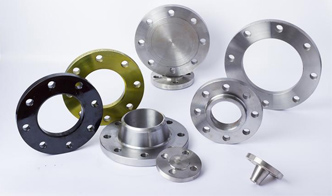-
Cangzhou Yulong Steel Co., Ltd.
-
Phone:
+86 13303177267 -
Email:
admin@ylsteelfittings.com
- English
- Arabic
- Italian
- Spanish
- Portuguese
- German
- kazakh
- Persian
- Greek
- French
- Russian
- Polish
- Thai
- Indonesian
- Vietnamese
- Zulu
- Korean
- Uzbek
- Hindi
- Serbian
- Malay
- Ukrainian
- Gujarati
- Haitian Creole
- hausa
- hawaiian
- Hebrew
- Miao
- Hungarian
- Icelandic
- igbo
- irish
- Japanese
- Javanese
- Kannada
- Khmer
- Rwandese
- Afrikaans
- Albanian
- Amharic
- Armenian
- Azerbaijani
- Basque
- Belarusian
- Bengali
- Bosnian
- Bulgarian
- Catalan
- Cebuano
- China
- China (Taiwan)
- Corsican
- Croatian
- Czech
- Danish
- Esperanto
- Estonian
- Finnish
- Frisian
- Galician
- Georgian
- Kurdish
- Kyrgyz
- Lao
- Latin
- Latvian
- Lithuanian
- Luxembourgish
- Macedonian
- Malgashi
- Malayalam
- Maltese
- Maori
- Marathi
- Mongolian
- Myanmar
- Nepali
- Norwegian
- Norwegian
- Occitan
- Pashto
- Dutch
- Punjabi
- Romanian
- Samoan
- Scottish Gaelic
- Sesotho
- Shona
- Sindhi
- Sinhala
- Slovak
- Slovenian
- Somali
- Sundanese
- Swahili
- Swedish
- Tagalog
- Tajik
- Tamil
- Tatar
- Telugu
- Turkish
- Turkmen
- Urdu
- Uighur
- Welsh
- Bantu
- Yiddish
- Yoruba

Oct . 06, 2024 04:54 Back to list
steel mandrel bends
Steel Mandrel Bends A Comprehensive Overview
Steel mandrel bends play a crucial role in various industries, particularly in piping, automotive, and construction sectors. These specialized bends are designed to create smooth, seamless curves in steel tubing, allowing for efficient flow and structural integrity. The process of creating steel mandrel bends involves several steps and specialized equipment to ensure precision and quality.
At the core of the mandrel bending process is the mandrel itself, a tool inserted into the pipe or tube to support its inner walls during bending. This support is critical because it prevents the tube from collapsing or deforming, which often occurs in traditional bending methods. Without a mandrel, the bend might suffer from wrinkling or ovality, compromising the performance of the final product.
The materials used for making steel mandrel bends typically include stainless steel and carbon steel
. Stainless steel is often preferred for applications requiring corrosion resistance, such as in chemical processing or food and beverage industries, while carbon steel is acknowledged for its strength and weldability, making it suitable for structural applications.steel mandrel bends

The advantages of steel mandrel bends are numerous. They provide a tighter radius compared to conventional bends, which is essential for applications with space constraints. Additionally, these bends maintain a consistent diameter throughout the curve, enhancing the overall performance of the piping system. The smooth flow created by the mandrel bends reduces turbulence, minimizing energy losses in fluid transport systems.
Manufacturers employ different methods for mandrel bending, including hydraulic and mechanical systems. Hydraulic mandrel bending machines, for example, use hydraulic pressure to achieve precise bends, allowing for rapid production rates. On the other hand, mechanical bending machines may be preferred in less demanding environments due to their simplicity and lower operational costs.
Quality control during the bending process is vital. Each bend must be tested for structural integrity and adherence to specific tolerances and specifications set by industry standards. Non-destructive testing methods, such as ultrasonic or radiographic testing, may be employed to detect any potential flaws without damaging the bends.
In conclusion, steel mandrel bends are a vital component in many applications, providing enhanced performance through their unique design and manufacturing process. As industries continue to evolve, the demand for high-quality, precisely engineered bends will only grow, driving innovation and improvements in bending technology. Whether in piping systems, automotive components, or construction frameworks, understanding the significance of steel mandrel bends can lead to better design choices and increased operational efficiency.
Latest news
-
ANSI 150P SS304 SO FLANGE
NewsFeb.14,2025
-
ASTM A333GR6 STEEL PIPE
NewsJan.20,2025
-
ANSI B16.5 WELDING NECK FLANGE
NewsJan.15,2026
-
ANSI B16.5 SLIP-ON FLANGE
NewsApr.19,2024
-
SABS 1123 FLANGE
NewsJan.15,2025
-
DIN86044 PLATE FLANGE
NewsApr.19,2024
-
DIN2527 BLIND FLANGE
NewsApr.12,2024
-
JIS B2311 Butt-Welding Fittings LR/SR 45°/90° /180°Seamless/Weld
NewsApr.23,2024











